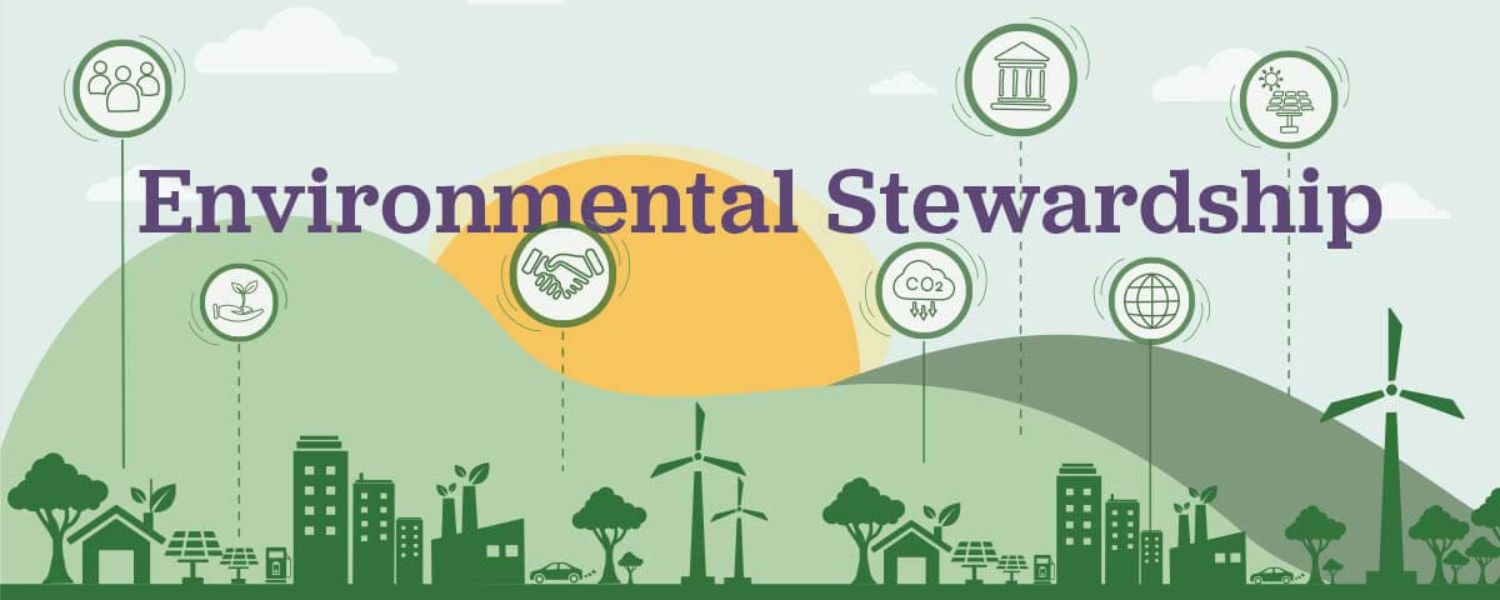Environmental stewardship is an increasingly significant concept in our modern world, emphasizing the responsible use and protection of the natural environment through conservation and sustainable uses.
This article delves into the essence of environmental stewardship, its importance, critical areas, challenges, and the role of businesses and management in fostering a sustainable future. We will also explore various examples and types of environmental stewardship to provide a thorough understanding of this critical topic.
What is Environmental Stewardship?

Environmental stewardship refers to the management and care of the natural environment. It involves actions and policies that ensure the sustainable use of resources, reduce environmental impact, and preserve ecosystems for future generations. This concept is rooted in the belief that all individuals, communities, and organizations must protect and sustain the natural world.
Stewardship encompasses a wide range of activities, from reducing waste and conserving water to protecting wildlife habitats and promoting renewable energy. It also includes the development and implementation of environmental policies and environmental stewardship program aimed at sustainability. By engaging in these practices, we can help mitigate the affects of climate change, preserve biodiversity, and ensure that environmental resources are available for future generations.
The Importance of Environmental Stewardship

However, the importance of environmental stewardship cannot be overstated. Moreover, as the global population grows, the demand for natural resources increases, leading to significant environmental degradation. Deforestation, pollution, and climate change are just a few pressing issues that highlight the need for effective stewardship.
Environmental stewardship is crucial for several reasons:
- Sustainability: By managing resources wisely, we can ensure they are available for future generations. This involves using renewable resources, reducing waste, and promoting practices that do not deplete or harm the environment.
- Biodiversity Conservation: Stewardship helps protect the diverse species that inhabit our planet. Maintaining biodiversity is essential for ecosystem health and resilience and providing services like pollination, water purification, and climate regulation.
- Climate Change Mitigation: Effective environmental stewardship can help decrease greenhouse gas emissions and enhance carbon sequestration. This is vital in mitigating the impacts of climate change and ensuring a stable climate for future generations.
- Public Health: A healthy environment is crucial for human health. Reducing pollution and ensuring clean air and water can prevent numerous health issues and improve the overall quality of life.
Critical Areas of Environmental Stewardship

Environmental stewardship covers a broad spectrum of areas. Key focus areas include:
- Resource Conservation: This involves the sustainable use and management of natural resources like water, soil, and minerals. Practices include reducing consumption, recycling, and using renewable resources.
- Pollution Reduction: Reducing air, water, and soil pollution is critical to environmental stewardship. This can involve implementing cleaner production processes, reducing emissions, and managing waste.
- Habitat Protection: Protecting natural habitats ensures the survival of various species and maintains ecosystem services. This includes establishing protected areas, restoring degraded habitats, and promoting biodiversity.
- Climate Action: Addressing climate change through mitigation and adaptation strategies is a crucial aspect of stewardship. This includes reducing greenhouse gas emissions, enhancing energy efficiency, and promoting renewable energy sources.
- Sustainable Agriculture: Implementing agricultural practices that do not harm the environment is crucial for stewardship. This includes organic farming, soil conservation, and reducing chemical pesticides and fertilizers.
Overcoming Challenges in Environmental Stewardship

While environmental stewardship is essential, it has its challenges. Moreover, these challenges can hinder the effective implementation of stewardship practices:
- Lack of Awareness: Many people need to be fully aware of the importance of natural stewardship and the steps they can take to contribute. However, education and awareness campaigns are crucial to address this issue.
- Economic Constraints: Implementing sustainable practices can be costly. Financial support and incentives are necessary to encourage individuals and businesses to adopt environmentally friendly practices.
- Regulatory Barriers: In some regions, inadequate or poorly enforced environmental regulations can impede stewardship efforts. Strengthening and enforcing environmental laws is essential for effective stewardship.
- Technological Limitations: Access to advanced technologies that support sustainable practices can be limited, particularly in developing countries. Investment in research and development is needed to overcome these limitations.
- Resistance to Change: People and organizations may resist changing their habits and practices, especially if they perceive it as inconvenient or costly. Overcoming this resistance requires demonstrating the long-term benefits of stewardship.
The Role of Businesses and Organizations

However, businesses and organizations play a critical role in environmental stewardship. They have the resources and influence to implement significant changes and environmental sustainability initiatives. Key actions they can take include:
- Corporate Social Responsibility (CSR): Many companies incorporate conserations
- into their CSR strategies. This involves reducing environmental impact, supporting conservation efforts, and promoting safeguarding and sustainability in their operations and supply chains.
- Sustainable Practices: Businesses can adopt sustainable practices such as lesser waste, using renewable energy, and implementing energy-efficient technologies. These practices benefit the environment and can lead to cost savings and improved brand reputation.
- Innovation: Further, investing in research and development can lead to new technologies and practices that support presidency. Sustainable Innovation in renewable energy, waste management, and sustainable agriculture are essential for a sustainable future.
- Collaboration: Businesses can collaborate with governments, NGOs, and other stakeholders to address environmental challenges. However, these partnerships can lead to more effective and comprehensive stewardship efforts.
- Education and Advocacy: Organizations can educate their employees, customers, and the public about the importance of and how they can contribute. Advocacy efforts can also help drive policy changes that support sustainability.
What are examples of environmental stewardship?

Environmental stewardship examples illustrate how individuals, communities, and organizations can contribute to sustainability. Here are a few notable examples:
- Community Clean-Up Programs: Local communities often organize clean-up events to remove litter from public spaces, beaches, and waterways. These initiatives help reduce pollution and promote a cleaner environment.
- Reforestation Projects: Planting trees and restoring forests are vital for administration. Trees sequester carbon, provide habitat for wildlife, and contribute to the overall health of ecosystems.
- Sustainable Farming Practices: Farmers adopting crop rotation, organic farming, and soil conservation contribute to presering. These practices reduce the environmental impact of agriculture and promote soil health.
- Renewable Energy Adoption: Additionally, to renewable energy sources like solar, wind, and hydropower is a crucial example of conserancy. Moreover, this shift reduces reliance on fossil fuels and lowers greenhouse gas emissions.
- Wildlife Conservation Efforts: Further, protecting endangered species and their habitats through conservation programs and protected areas is a critical aspect of stewardship. These efforts help maintain biodiversity and ecosystem balance.
Types of Environmental Stewardship

There are various types of handling, each focusing on environmental protection and sustainability aspects. However, understanding these types can help individuals and organizations identify areas where they can make a good impact:
- Conservation Stewardship: This type focuses on preserving natural habitats and ecosystems. Activities include protecting endangered species, restoring degraded lands, and establishing protected areas.
- Sustainable Resource Management: Involves the responsible use and management of natural resources like water, minerals, and forests. Practices include reducing consumption, recycling, and promoting renewable resources.
- Pollution Prevention: Aims to reduce the release of pollutants into the environment. This can involve implementing cleaner production processes, reducing emissions, and managing waste.
- Climate Stewardship: Focuses on addressing climate change through mitigation and adaptation strategies. Actions include reducing greenhouse gas emissions, enhancing energy efficiency, and promoting renewable energy sources.
- Community Engagement: Involves engaging communities in stewardship activities such as clean-up programs, environmental education, and local conservation projects. Community engagement is crucial for fostering a culture of stewardship and sustainability.
Conclusion
Environmental stewardship is a vital concept that underscores our responsibility to protect and sustain the natural environment. We can take meaningful steps toward a sustainable future by understanding its importance, critical areas, challenges, and the role of businesses and organizations like VectorGlobe. Everyone can contribute to environmental stewardship through community clean-ups, reforestation projects, or adopting sustainable practices. The examples and types of stewardship highlighted in this article, including initiatives by VectorGlobe, demonstrate the diverse ways we can all positively impact the environment. We can ensure a healthy, thriving planet for future generations by working together and embracing stewardship principles.

